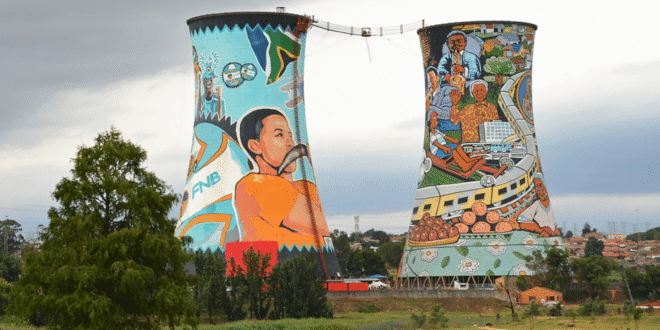A Photographer’s Mission to Bring Art to the Community
Gopolang Ledwaba, a passionate photographer, believes that photography is not just for the elite. His journey into the world of photography began during his studies in Johannesburg, where he noticed that photos created in poor communities were often displayed in high-end galleries but rarely shown in the areas where they originated. This realization inspired him to open a gallery in Soweto, a place known for its rich cultural history and vibrant community.
In 2020, Ledwaba took the bold step of opening the Mandebele Photo Gallery, located on a busy street in Braamfischerville, Soweto. The gallery stands out among typical businesses like food takeaways and hair salons, with its bright green walls currently showcasing photographs of the 1976 Soweto student uprising by the late photojournalist Peter Magubane, alongside new contemporary works by local photographers.
The Mandebele Photo Gallery is more than just a space to display art. It serves as a resource center where members of the community can learn about visual storytelling and art. The gallery features a library of books and a space that can be used as a photo studio. Educational workshops are regularly held to teach people about the business of art and photography.
Ledwaba also offers classes for children, focusing on visual literacy and the technical aspects of light and composition. He recalls how children would often walk past the gallery and peek inside. One day, he invited them in and asked if they wanted to learn about photography. Since then, they have been seen walking around the community with cameras donated to the gallery, guided by Ledwaba.
“We are entirely self-funded, so we are always appealing for donations of old camera equipment for the kids to use during their lessons,” said Ledwaba. He also hopes to expand the gallery and increase its impact on the community.
Ledwaba’s interest in photography was sparked during an English class in primary school, where students were asked to select articles from newspapers and discuss them with the class. He was captivated by the photographs he encountered, especially those related to the war in Iraq. At the time, he was more interested in the images than in the articles themselves.
Initially, Ledwaba wanted to attend film school, but it was too expensive. His mother worked as a domestic worker, and she couldn’t afford the costs. To support his passion, he worked as a waiter and saved money to buy his first camera. He taught himself how to take photographs, using every free moment to practice. If he worked the night shift at the restaurant, he would come home, sleep for two hours, and then head out to take pictures.
He later studied photography at the Market Photo Workshop in Johannesburg, where he developed the idea to start his gallery. “Art should not just be for the elite, it should be for everybody. If people can be exposed to art that they don’t normally have access to, people will begin to view themselves differently and begin to view the world differently.”
Through his efforts, Ledwaba continues to make a difference in his community, proving that art and photography can be accessible to all. His work not only preserves the stories of the past but also empowers the next generation to tell their own through the lens of a camera.
 Info Malang Raya Its All About World News
Info Malang Raya Its All About World News




